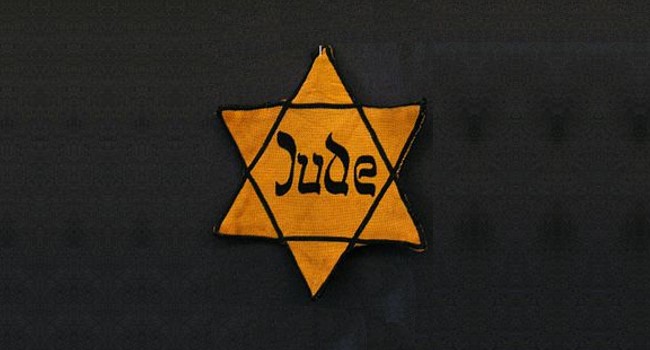
Antisemitism is stupid. It is illogical. It is disgusting, and yet, it keeps popping up in news headlines.
What drives anyone to be antisemitic is something that I can only guess. It could be that antisemitic people are just simple citizens, people of the land, the common clay. You know . . . morons.

It’s common for one group of people to be chosen to be scapegoats for woes faced by other people. Such was the case in Europe during the Black Death that occurred from 1346 CE to 1353 CE.
Encyclopaedia Judaica explains what happened to European Jews at that time:
- “The Black Death not only resulted in the immediate destruction of thousands of Jewish lives and the loss of Jewish homes and property in hundreds of communities, but had more far-reaching consequences. Popular imagination invested the already odious image of the Jew with even more horrible characteristics. It was this image that helped to shape the stereotype of the Jew represented by anti-Semitism and racism in modern times.
After the Black Death, the legal status of the Jews deteriorated almost everywhere in Europe. Although Jews were frequently received back into the cities where many had been killed or driven out, sometimes within a year of the decision to expel them for good, they usually only gained permission to resettle on worse terms and in greater isolation than before. The position of the Jews in Aragon and Castile (Spain) deteriorated sharply after 1348–49.
The only countries in Europe where the events of the Black Death did not leave a permanent scar on the Jewish communities were Poland-Lithuania.”
Advances in scientific and historical knowledge should have put to rest any notion that Jews were to blame for the Black Death or any other naturally-occurring harmful phenomenon. However, as comic-strip character Dilbert observed, all humans are irrational.
Antisemitic irrationality rose in Germany after World War I ended, as the United States Holocaust Memorial Museum explains:
- “The Nazis falsely accused Jews of causing Germany’s social, economic, political, and cultural problems. In particular, they blamed them for Germany’s defeat in World War I (1914–1918). Some Germans were receptive to these Nazi claims. Anger over the loss of the war and the economic and political crises that followed contributed to increasing antisemitism in German society. The instability of Germany under the Weimar Republic (1918–1933), the fear of communism, and the economic shocks of the Great Depression also made many Germans more open to Nazi ideas, including antisemitism.”
Antisemitism was prevalent in the USA while World War II took place, but the situation in the USA changed after World War II ended, as the Anti-Defamation League explains:
- “While antisemitism persisted at home, about 550,000 American Jews fought alongside their countrymen in World War II, and 36,000 were decorated for their bravery. By the war’s end, widespread American awareness of the Holocaust and of America’s victory over Nazism — as well as interactions with Jewish soldiers in the armed services — transformed American society’s beliefs and treatment of Jews.
Post-1945, publicly expressed antisemitism declined dramatically in the United States. The percentage of Americans who reported hearing recent criticism of Jews plummeted from 64 percent in 1946 to 16 percent in 1951. In postwar public discourse, commentators began to discuss Protestantism, Catholicism and Judaism as America’s three prominent spiritual traditions — a ‘Judeo-Christian’ tradition.
Part of the change in the condition of Jewish life in America was a result of the significant improvement in Catholic-Jewish relations, beginning with the historic meeting of the Second Vatican Council in 1965. The Second Vatican Council notably repealed the historic Church theme of collective responsibility for the Jews in the death of Jesus that has been the source of antisemitism through the ages, and opened a path to new relations between the members of the two religions.”
That historic Catholic Church “theme of collective responsibility for the Jews in the death of Jesus” is reflected in Steven Spielberg’s 2022 semi-autobiographical film The Fabelmans. In the film, the Jewish main protagonist is subjected to antisemitism while attending high school. In one scene, a non-Jewish bully tells the protagonist, “Apologize for killing Jesus.”
As the Second Vatican Council admitted, Jews didn’t kill Jesus.
Sure, some religious leaders in Judea wanted Jesus dead, but the people who killed Jesus were non-Jewish Roman soldiers, and a subordinate of the Roman government ordered those soldiers to crucify Jesus.
So, the “Jews killed Jesus” claim has always been bull excrement.
As the Anti-Defamation League reports, antisemitism in the USA has diminished but not vanished:
- “Nevertheless, as the 20th Century turned to the 21st, the extent of how far Jews came to be accepted in the United States can be illustrated in for the first time, a major political party nominating not just an American Jew — but an observant one — to be its vice-presidential candidate. Indeed, the Joe Lieberman candidacy and the acceptance of it is but one measure of the American Jewish community’s acceptance and success. And yet, antisemitism has not been extinguished entirely. In fact, there are numerous indicators that demonstrate its lasting presence.”
Antisemitism’s lasting presence in the USA is seen in modern-day news headlines.
Here is a screenshot of a Google search that I did on the subject:

As I see it, antisemitism will persist if people are unwilling to talk about it.
Thankfully, someone is talking about it.
Andrew Silow-Carroll interviewed Rabbi Diana Fersko, author of the new book “We Need to Talk About Antisemitism”. Here is an excerpt from his article about Rabbi Fersko’s work:
- “Her new book, ‘We Need to Talk About Antisemitism,’ also has a Passover motif. So much of contemporary antisemitism, she writes, is about ‘narrowing’ – the same way that the Israelites’ identity in Egypt (Mitzrayim, or ‘The Narrows,’ in Hebrew) was restricted to a ‘specific, inflexible, and incomplete Jewish stereotype.’ She sees such narrowing in the way even well-meaning people expect Jews to look or behave. ‘Narrowing’ is what leads the far right to assign Jews to a conspiracy to undermine the West. And the left ‘narrows’ Jews when they slot members of a diverse, complex community as white people who are leveraging their privilege to oppress others, especially Palestinians, and who themselves have no claim on victimhood.”
As I see it, antisemitism occurs whenever one denies the Jewishiness of a person who fits the definition of a Jew that was in use before Alexander the Great was born. I have witnessed that happening. I will elaborate in another post.
Sometimes, antisemitism is unintentional, but that fact doesn’t make it acceptable.
![]()
This post’s featured image is the creation of Daniel Ullrich and is licensed for use in this post under the Creative Commons Attribution-Share Alike 3.0 Unported license.
The “Wanted” posters say the following about David: “Wanted: A refugee from planet Melmac masquerading as a human. Loves cats. If seen, contact the Alien Task Force.”
















